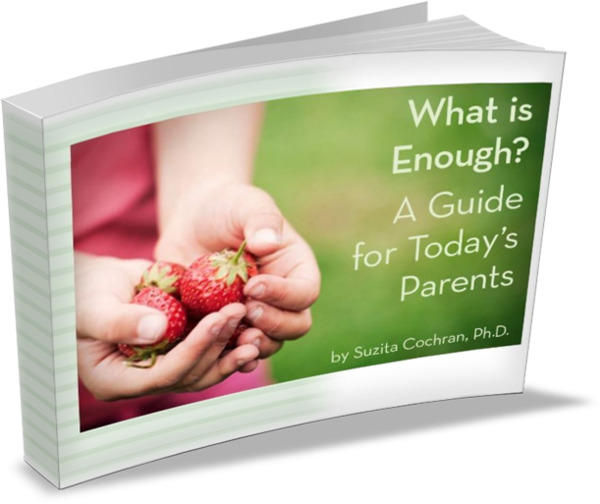“He’s wearing me down. Maybe he’ll go to law school someday and use those debating skills to make a living!” My mental musings after hearing our 12 year-old’s impassioned appeal for an iPad of his own.
We’d just returned from visiting friends with three kids. Each had their own iPad, and as we said goodbye all sat quietly on the sofa engaged in video games or youtube videos. None of the jostling for screen time which so often happened at our house.
However, the answer to the plea would still be no.
We all know saying no to a toddler is hard because it so often leads to a messy, difficult tantrum. The good news is that after years of facing a range of tantrums, parents slowly get better at dealing with—or at least recovering from—them.
Then most parents get a bit of a break during the elementary school years. And just when we’re thinking that we aren’t so bad at this parenting gig, the kids enter the middle and high school years. At our house, daily requests seemed to triple at this time. With so many asks coming at you, it’s easy to lean on ready rationalizations for saying yes to all of it.
“She’s in middle school now after all.”
“Other parents seem to be letting their teens do this.”
“I’m too tired to think this one through.”
“He’s got a good head on his shoulders. He’ll be fine.”
“We can afford it, so we might as well let him have one.”
It feels good to say yes to teens—and of course we should do so when it makes sense. Constantly saying no makes us feel like the strict parent on the block who never has any fun. And our teens support this premise by presenting examples to prove that our parenting decisions fall on the far end of the bell curve.
Yet being parents of three teens, Todd and I have been saying no a lot for the past few years.
“Are you having fun yet?” I whisper to Todd when we’re mired in a parenting dilemma. “Was this what you were picturing way back when?”
But I recently came across a book that reminded me of the benefits our teens receive from not hearing yes to every request. Stretch: Unlock the Power of Less—and Achieve More Than You Ever Imagined, by Scott Sonenshein.
Sonenshein studies organizations—and the workers within their doors—and tells readers that when people have fewer resources, they have greater access to their creativity. When a business has limited means, workers are more likely to use a material on hand to solve a problem, rather than buy something new.
People “stretch” to arrive at innovative solutions when resources are limited. It turns out my teens are benefiting from this scenario. Not giving adolescents endless resources forces them to stretch as well. I began to feel hopeful. Still tired, but also hopeful.
Requiring Teens to Share a Car
Sonenshein’s research suggested that when Todd and I said no to becoming a three-car family once Stephen—then recently Daniel—learned to drive, we were requiring our sons to stretch by sharing a car with us.
So far, the stretching the boys have done has looked like this:
They are motivated to communicate about upcoming plans in our weekly family meetings. After a few times when both Stephen and Daniel needed the car (our other car is a stick shift that they aren’t yet proficient at driving), the boys became more communicative with each other. More communicative, not fully communicative. I am learning it’s a long road to full communication.
When one of the kids needs to get somewhere and doesn’t have access to the car, they have been more willing to take the local bus or ride a bike, or even ask if the event (a band practice with friends, for example) can be rescheduled.
Creative solutions have been generated. Sometimes Stephen will drive Daniel to one event and then continue on to his own.
I’ve stretched at times as well because Stephen and Daniel share the car I usually drive.
Sharing a Computer
At one point or another, each of our three kids has asked for their own computer. Todd and I have also said no to this request—until each gets their own laptop for college. For the past few years, our family of five has shared two computers and an iPad. Todd has a computer at work as well. At times this situation has required more planning ahead than sharing a car. But even with high school course loads growing, we’ve managed.
Sharing the computer has required the kids to think ahead about when they will do certain homework projects. When the computers are in use, our kids come up with off-line homework they can do. Sharing computers means the screens are located outside of bedrooms, and more easily seen by parents. Additionally, sharing computers has meant less overall screen time. When others are using the computers, the kids generate non-screen activities to keep them busy. This too stretches their adolescent brains.
The stretching Stephen, Daniel, and Annie have done as a result of parental “no’s” has helped them practice skills they will use in the work world. Having fewer resources in our home has required the kids to negotiate more often than they otherwise would have.
When more than one person wants the car or computer, teens must stand in the shoes of others and think through whose situation is a higher priority. Since teens’ brains are wired to make them more self-focused than the average person, regularly working with others and thinking about everyone’s priorities has truly been a stretch.
It’s still challenging to say no regularly to teens, but remembering some of the lasting benefits a no brings—even if the teens themselves can’t see these benefits yet—makes saying no now and again worth it.
_____________
Take a look at my new book, Sweet Spots: Helping Your Kids Find ENOUGH in Their Lives–in paperback or kindle! Parents of young kids might be excited to read this around the holidays.





